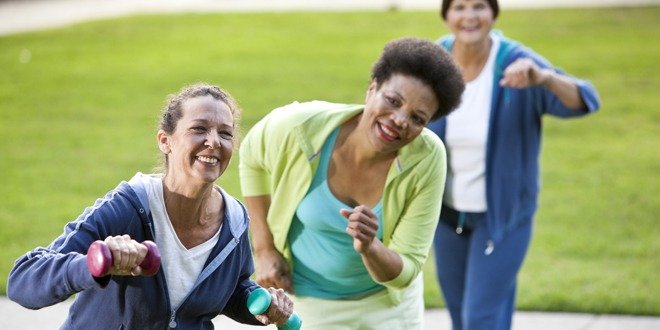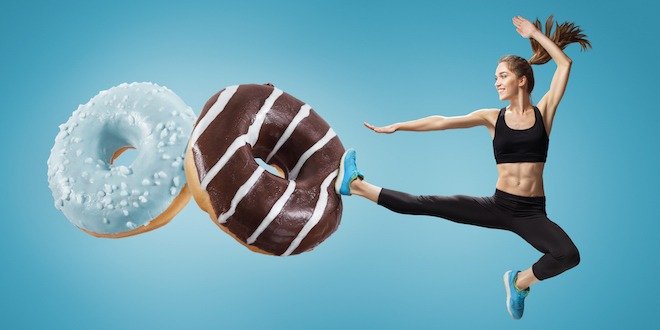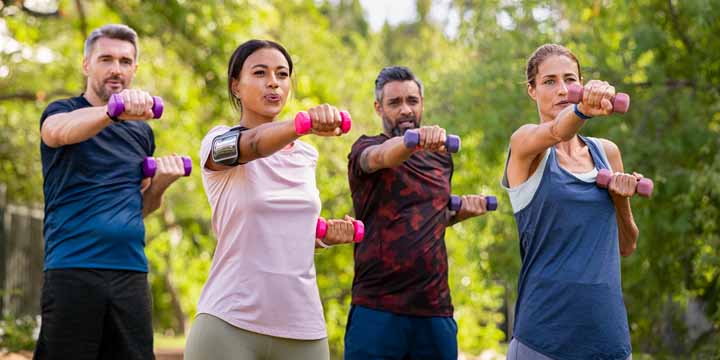
There are lots of myths surrounding the world of exercise and fitness. While some of them are harmless, others can actually lead to injury. Here are three fitness myths that need busting, and the sooner the better!
Myth #1: If you want to lose fat, you have to work out in the ‘fat burning zone’
If you have worked out in a gym, you’ve likely seen a poster on the wall that shows the ‘maximum fat burning zone.’ Many exercise machines even have a ‘fat burning’ program. It sounds promising: do the program, burn some fat!
But let’s look at what this really means. To understand this myth, you need to understand how the body uses energy. During rest (say, lounging on the couch), 60% of your energy needs are supplied by fat (stored fat, or eaten … if you were on the couch eating bacon!), and the other 40% of energy is supplied by carbohydrate (stored as glycogen or available in the blood as sugar). As soon as you start to do any physical activity, your body will start using more carbs and less fat. As the intensity of the activity increases, your body is not able to use fat effectively for energy, so most of the energy will be supplied by carbs.
So why the heck would you want to work so hard when you could be lying on the couch burning fat? See, this is why this myth is so attractive. But it is so misleading. It all boils down to calories. If someone cycles at a higher intensity for the same amount of time as someone cycling slowly, the higher-intensity person will go further and burn more calories. This is somewhat like the nutrition debate: whether you choose a low-fat or low-carb diet doesn’t really matter. What matters is how many calories are eaten. You need to eat less to create an energy deficit.
Furthermore, some research shows that vigorous-intensity exercise leads to additional calories being burned later in the day, compared with lower-intensity exercise. This is what the vigorous intensity exercise looks like:
- It has to be hard enough to make you work up a good sweat
- It will feel somewhat hard, but you’ll be able to handle it
- It will increase your body temperature, heart rate and blood pressure
- It will lower your glycogen stores
- It will raise your stress-hormone levels
When a workout does all these things, your body will continue to burn a higher level of calories, even after you finish. But before you hop on the high-intensity bandwagon, keep in mind that you should be realistic about your current
Myth #2: No pain, no gain
Why is it that the only time people think it’s okay to be in pain is during exercise? There is a difference between pushing your limits and pushing too hard. Discomfort can be good but pain most often is bad. Pushing to the point of pain can lead to injuries and other problems. It is simply not true that the best workout should leave you feeling awful, sore and beat up the next day. I think it is pretty safe to say, “If it hurts, stop doing it.”
However, some muscle soreness a day or two after a tough workout can be expected. In the past, it was thought that this soreness was caused by lactic acid build up in the muscles. However, this theory has been proven false, as any lactic acid that is produced during exercise is cleared shortly after you finish. Instead, the soreness is caused by microscopic tears in your muscles produced when you exercise. This leads to inflammation and soreness. I know this sounds bad, but it is a normal process. As your body repairs those microscopic tears, you build new, healthy and strong muscle tissue. If you are really sore, try to keep moving, as that can help loosen up tight muscles, but take a day off from any tough workout that uses the same muscles.
Myth #3: Abdominal workouts will give you a flat tummy
A big belly just doesn’t look good, does it? While that might be true, the more important concern is that excess weight around the middle is a serious health risk. Despite numerous claims of ’30 days to six-pack abs,’ there is no quick fix. You cannot pick and choose where you lose your fat. The only solution is to eat healthy food and do regular physical activity.
I am not suggesting that you skip the abdominal workouts; instead, include them as a component of ‘core exercises.’ These types of exercises strengthen your core muscles, including your abdominal muscles, back muscles and the muscles around the pelvis. Strong core muscles make it easier to do many physical activities by enhancing power, balance and stability. Thus, they can help prevent falls and injuries during sports or other activities, as well as reduce back pain. In fact, a strong, flexible core is important for almost everything that you do.



